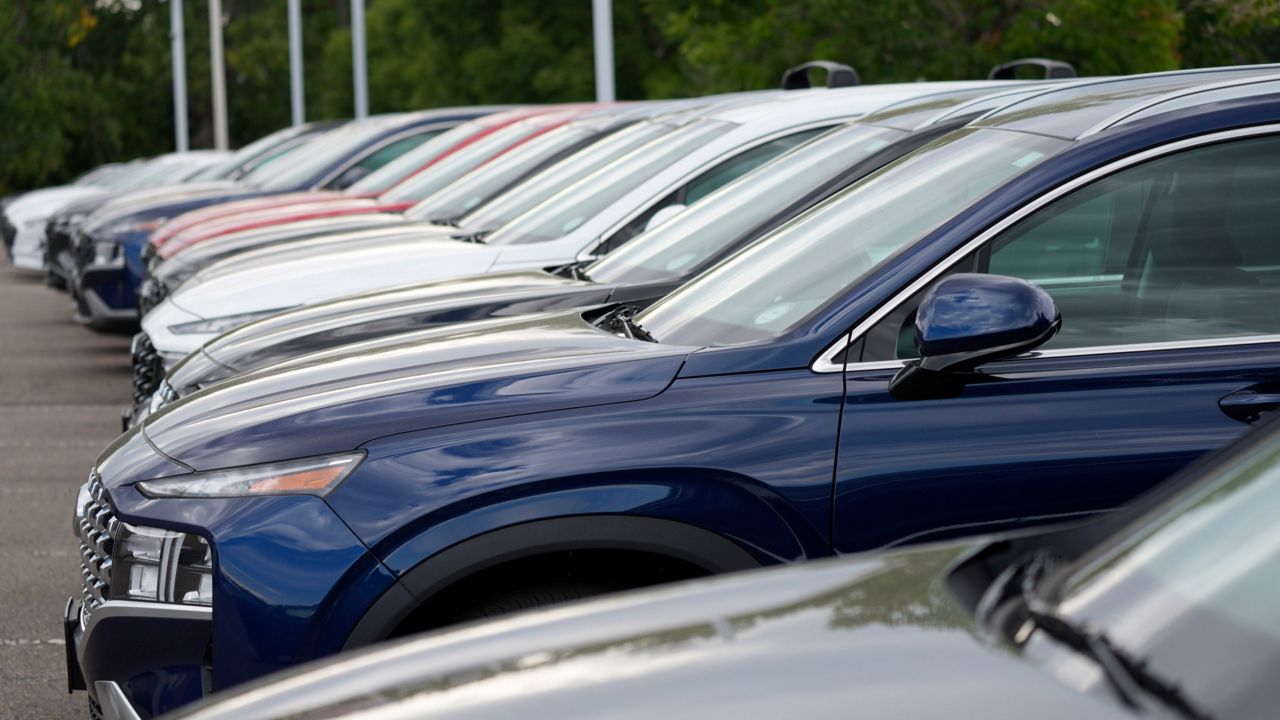NATIONWIDE — Higher-than-ever prices. Limited availability. Unrelenting demand. If you’ve been in the market for a vehicle this past year, you know it’s tough to buy right now. But there’s some good news for 2022.
“Our expectation is that we will see the supply situation improve significantly through the course of the year,” Cox Automotive Senior Analyst Charlie Chesbrough said during a web presentation of 2022 industry insights this week. “The first quarter is likely to be rough as omicron hits around the world, but the second quarter and particularly in the latter half of the year, supply should see noticeable improvement.”
Cox predicts a 5% to 7% increase in new vehicle sales throughout the year as automakers recover from pandemic-induced supply chain shortages that have hampered production and emptied dealership lots. Its analysts also expect a 4% decrease in used vehicle sales.
Prices, however, are expected to remain high and, in many cases, outpace inflation as they have done for the past year. In December, the average new vehicle transaction price reached a new peak of $47,077 — a 23% increase from a year earlier, according to Kelley Blue Book. In November, the used vehicle list price also hit an all-time high of $27,569 — a 27% increase compared with 2020.
“Rising prices haven’t held back the vehicle market yet, but as interest rates rise this year, monthly payments will follow,” Chesbrough said.
With the Federal Reserve expected to increase interest rates three times this year, beginning as early as March, Cox Automotive expects even more demand for new and used vehicles in the short term as consumers get anxious about rates pushing higher.
“These increases are changing the marketplace and are also likely changing who can afford to buy a new vehicle,” he said.
Already, the used vehicle market has been driven to unprecedented pricing heights by a lack of new vehicles that is inspiring more buyers to shop for previously owned vehicles. Higher prices for new cars, trucks and SUVs are also a factor.
Ten years ago, 54% of new vehicles were priced below $30,000 and 6% were priced above $50,000. Today, the situation has reversed. Just 19% are priced below $30,000 and 30% cost more than $50,000, as automakers move away from lower-priced vehicles, forcing more buyers into the used market.
Tight supply this past year meant sellers were able to charge significantly more than the manufacturer’s suggested retail price, and consumers were willing to pay for the markup.
Even with 2 million fewer vehicle sales in 2021 compared with pre-pandemic levels, automakers’ revenues were $70 billion more than in 2019, while used vehicle sales last year were the highest they have been in a decade.
American brands in particular are becoming less affordable, Cox found. Ford has now surpassed Mercedes as the market leader for vehicles costing more than $50,000, according to Cox data. Asian manufacturers are currently the affordable-car market leaders.
In 2021, the Japanese automaker, Toyota, for the first time ever out sold General Motors in the United States, with a sales increase of 10% compared with 2020. The Camry was the bestselling car last year, while the RAV4 was the bestselling SUV.
Hyundai also increased its market share by 1.5%, finishing ahead of Honda to become the fifth bestselling auto brand in the U.S., while Ford, GM and Stellantis collectively saw a 5% loss in market share last year.
“With the economy doing well, unemployment and interest rates low and available inventory tight, vehicle buyers looking for good deals will be challenged,” Chesbrough said.
At least used car prices are expected to stabilize. Once automakers begin to rebuild new vehicle inventories, pre-owned vehicles are expected to return to a more normal depreciation cycle in the summer. They are not, however, expected to crash.
“This is not a price correction,” said Cox Automotive Chief Economist Jonathan Smoke. “We do not believe that the fundamental ingredients are in place for a collapse in demand. That isn’t likely given the macroeconomic backdrop.”
With American unemployment at a 50-year low, the U.S. economy is expected to grow by at least 3.5% this year, according to the Conference Board — twice the rate of economic growth before the pandemic.



